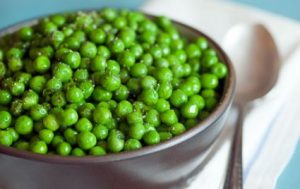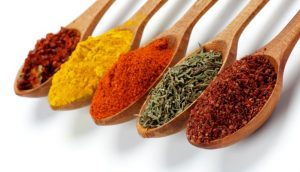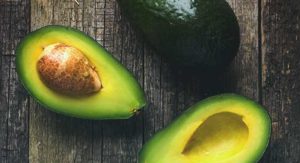It’s natural that our food preferences and diets will change just as the seasons. Then let’s take a look at the upcoming changes in nutritional habits predicted for this year by the Specialty Food Association (SFA). These new eating habits will ensure you enjoy a healthy new year.

Eat whole grain bread with yeast
It’s rich in fiber, probiotics and omega-3 fatty acids and results in having a lower glycemic index than starchy bread with yeast. It keeps you feeling fuller longer, fights constipation and is the worst enemy of a flat tummy.
Drink plant-based milk
The increase in the number of people with lactose-intolerance, as well as those preferring a vegetarian diet, has led the food industry to develop dairy products derived from rice, soy, and almonds. Always check labels and select the ones that do not have sugar.

Give me a pea
The humble green pea that we disdained growing up is in for a comeback in 2018… but perhaps not as we knew it before. As far as its nutritional value is concerned, the pea is one of the best foods you can eat because it is full of protein, fiber, metals, and antioxidants. The rise in plant-based food has already begun and the demand for plant-based protein is on the rise, often in powder form. Protein from peas is one of the most recent trends and its advantage over other powders is its neutral taste, making it the perfect addition to soups and beverages.
Make room for mushrooms
Mushrooms are a fungus that has been labeled a superfood and has started filling supermarket refrigerators. Mushrooms are known for their ability to balance blood sugar levels and help with inflammation, but new research has also proven that they are exceptionally useful in detoxifying your body from harmful toxins.

Make it hot
The preference for Eastern flavors in food has led to the availability of a wide variety of herbs and spices that are immensely satisfying. These spices cause increased thermogenesis and kick-start your metabolism. As a result, you burn more fat and feel less hunger.
Cut back on sugar
Prefer to consume natural sweeteners. Consumer awareness and higher obesity rates have demonstrated the need for natural sweeteners like stevia, sweet sorghum, sunroot, or yacon root.
Put avocados on your plate

Adding avocados to your meals will help you better regulate your weight and have a positive impact on your overall health. A research team, headed by Dr. Joan Sabate, President of the Department of Nutrition at Loma Linda University, found that avocados help regulate blood sugar levels – a finding that could have significant applications for those suffering from diabetes. According to the Hass Avocado Board (HAB), which funded the study, one fresh avocado contains about 250 calories and 23 grams fat. Even though there is a high-fat content in avocados, it is a good fat in the form of monounsaturated fats. Studies have proven that this type of fat can lower cholesterol and reduce the risk of heart and brain disease. The researchers also wanted to see how avocado consumption impacted hunger, blood sugar levels and the response to insulin and food after a meal. The results of the study revealed that participants consuming ½ fresh avocado with their meal reported a 40% reduction in hunger and food craving for three hours after that meal and a 28% reduction in hunger for the next five hours, in comparison with those who did not consume avocado.
Don’t forget the labels
Consumers should demand transparency and information about genetically modified foods, additives, sugar content, fat, and calories.
Remember your colors
Red: Red fruit and vegetables like tomatoes contain lycopene. Research has proven that lycopene protects your body from various cancers, including prostate, lung, and stomach. Lycopene is an antioxidant that protects cell structure and DNA from the negative impact of free radicals, the microorganisms that destroy healthy cells and allow tumor cells to grow.
Orange: Carrots, mangos, pumpkin, sweet potatoes, and apricots are all rich in cryptoxanthin and beta carotene, elements that reduce the risk of respiratory disease. Cryptoxanthin protects your body from arthritis and cancer, while beta carotene boosts memory and mental health.
Green: Spinach and other green leafy vegetables protect the eyes and heart. Lutein and xanthine, two elements contained in these vegetables, reduce the risks of developing cataracts as we get older. But they are even more beneficial to your heart. For every daily serving of green leafy vegetables, the risk of heart disease is reduced by 11%. Green leafy vegetables also contain vitamins A and C.
Purple: The dark purple color found in various berries, beets, and cabbage comes from anthocyanins, elements that restrict the development of tumors and have anti-inflammatory properties, which reduce arthritis pain and protect your body from heart disease. Even for those undergoing cancer treatment, berries can be helpful. In fact, there is scientific proof that they help in chemotherapy by minimizing the ability of cancerous cells to survive the attack they are receiving from the cancer medications.
Brown: Even though they are not fruit or vegetables, legumes play a critical role in maintaining a healthy diet. Lentils, black-eyed peas, and garbanzo beans are an excellent source of folic acid, one of the B vitamins, which helps prevent the clogging of arteries and veins, which increases the likelihood of heart disease, a heart attack or stroke. By decreasing the levels of Homocysteine in the blood, folic acid keeps blood vessels clean. Remember that the nutritional elements we find in fruit and vegetables are sensitive to high temperatures and so it’s better for them to be consumed raw if possible.
Learn how to add detox drinks to your daily diet to lose weight and get rid of toxin buildup in your body at whatdetox.com.


















